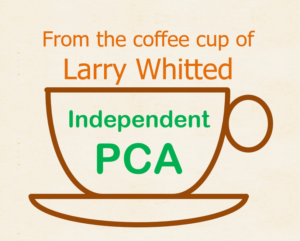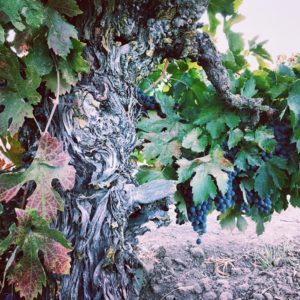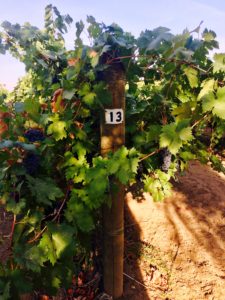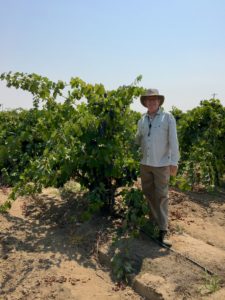 One of the newest educational activities on the calendar for the Lodi Winegrape Commission is a monthly Lodi CD11 PCA Network Breakfast Meeting that is held on the first Tuesday morning of each month. You can find the time and location of the meetings at lodigrowers.com. These meetings are not just for pest control advisers but also for growers, winemakers and anyone else who is interested in vineyard pest management.
One of the newest educational activities on the calendar for the Lodi Winegrape Commission is a monthly Lodi CD11 PCA Network Breakfast Meeting that is held on the first Tuesday morning of each month. You can find the time and location of the meetings at lodigrowers.com. These meetings are not just for pest control advisers but also for growers, winemakers and anyone else who is interested in vineyard pest management.
These meetings are an opportunity for those of us who are involved in vineyard pest management to compare notes and share information about what we are seeing in the vineyards and what actions we are taking. At the September meeting I shared some of my ideas about pest management activities that are particularly important in September.
September is a busy month in which harvest is the top priority. Nevertheless, there are some pest management activities that are most effective in September and which should be considered even though the harvest still comes first.
With the tools that are currently available to us I believe that September is the best month to control nematodes. First of all, do you have a nematode problem? If you want to take a nematode sample Bayer CropScience has a program called the SNAP program (Soil Nematode Analysis Program) in which Bayer pays for the cost of processing the soil sample at the Nematodes, Inc. laboratory in Selma, California. Talk to your PCA if you are interested in participating in this program.

Bayer isn’t providing the service entirely out of the goodness of their heart. They currently have what I consider to be the most effective nematicide on the market with another one in the pipeline. They want you to find out if you have a problem so that you might then use their products to solve that problem.
The nematicide that I like to use in September is Movento, and there are a couple of reasons that I like to use it in September. For one thing, in September grapevines, and many other plants, are sending carbohydrates from the leaves to the roots. Therefore, the vine is going to send more of the active ingredient of Movento to the roots in September than it would do in the spring and the roots are where the nematodes are. Also, I want to apply the Movento to the foliage in September rather than October because the grapevine has to metabolize the active ingredient in Movento into another compound in order for it to work and that metabolic process will be greatly reduced if I wait until October.
I used to call this September application of Movento a “post-harvest” application but I have stopped using that term because if you have a variety that will not be harvested until late September or October the September application is actually a “pre-harvest” application. Movento only has a 7-day pre-harvest interval so this is not a problem. In addition, in machine-harvested vineyards the leaves are more numerous and in better shape prior to harvest and we are talking about a foliar application of Movento rather than a soil application.

Another pest that can be well controlled in September, and for a similar reason, is bermudagrass.
In September bermudagrass, like the grapevine, is sending carbohydrates to the roots and will also send the systemic herbicide that you apply to the foliage down to the roots. In this case I am talking about a true post-harvest application because the products that are most effective and safest to use have 50-day pre-harvest intervals. I like to use Fusilade or Poast for a post-harvest September application for bermudagrass control because they only control grasses and therefore will not harm the grapes if there is some inadvertent drift onto the grape leaves. By comparison, Roundup would also control bermudagrass in September but I am afraid that if there is any drift of Roundup onto the grape leaves the vine will then send the Roundup down to the roots and cause damage that will be visible the following year.
I also think that September is a good time to apply nitrogen fertilizer, if desired, based on research conducted many years ago by U.C. farm advisor Bill Peacock in Tulare County. He found that a September application was very efficient because the vine would take the nitrogen up and store it in the wood. The nitrogen would then be available the following spring when the vine was engaged in a period of rapid vegetative growth at a time of cool soil temperatures. Of course, for the vine to take up the soil-applied nitrogen the leaves have to be in good shape so this isn’t a good practice if your canopy is in bad shape due to water stress or mite damage.
I am not recommending any of the above practices for your particular vineyard. These are just examples of the kinds of things that we talk about at the Lodi CD 11 PCA Network Breakfast Meeting. If you think that any of these practices might be right for you then please discuss them with your PCA and he or she can advise you regarding whether or not they might be applicable for your individual vineyard.

Larry Whitted, a frequent blog contributor, is an independent PCA and also the current Chairperson for the Lodi Winegrape Commission’s Research, Education, and Communication Committee.
Have something interesting to say? Consider writing a guest blog article!
To subscribe to the Coffee Shop Blog, send an email to stephanie@lodiwine.com with the subject “blog subscribe.”
To join the Lodi Growers email list, send an email to stephanie@lodiwine.com with the subject “grower email subscribe” or click on “join our email list” to the right.
To receive Lodi Grower news and event promotions by mail, send your contact information to stephanie@lodiwine.com or call 209.367.4727.
For more information on the wines of Lodi, visit the Lodi Winegrape Commission’s consumer website, lodiwine.com.

